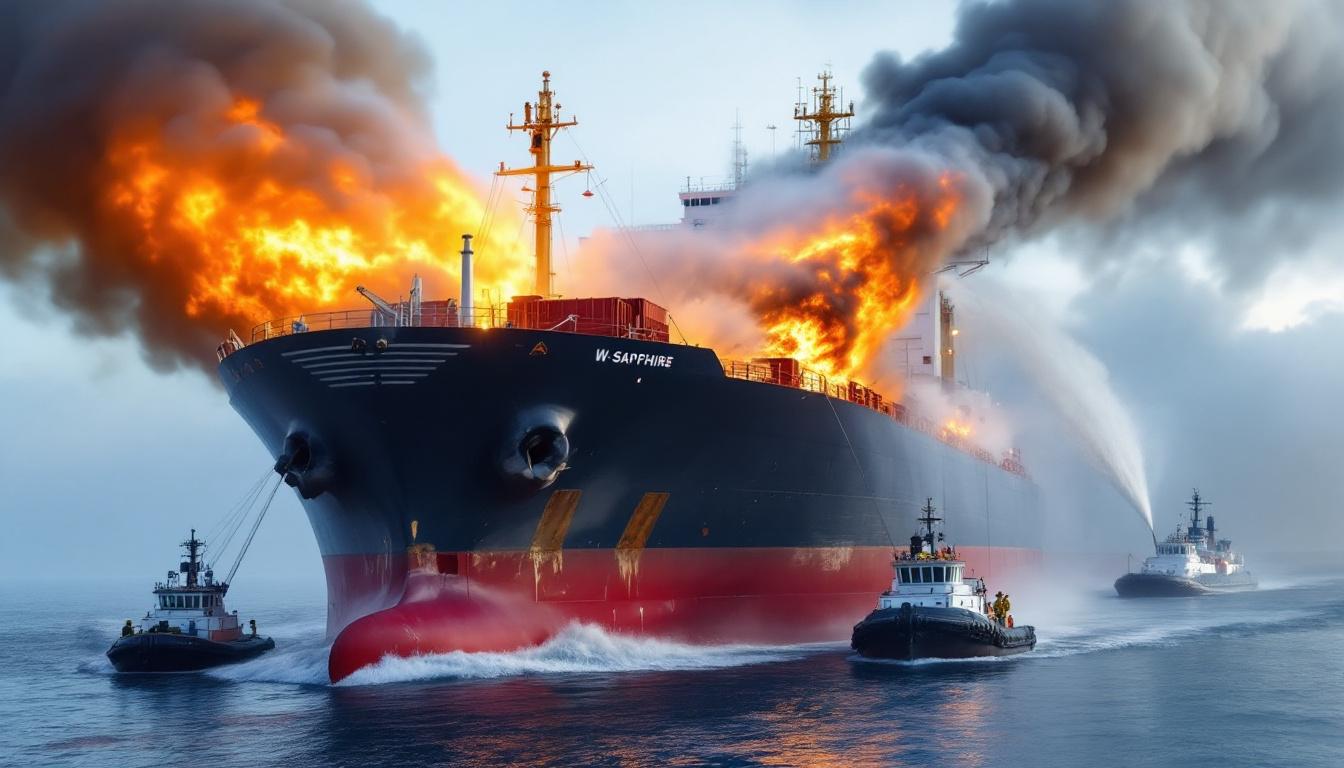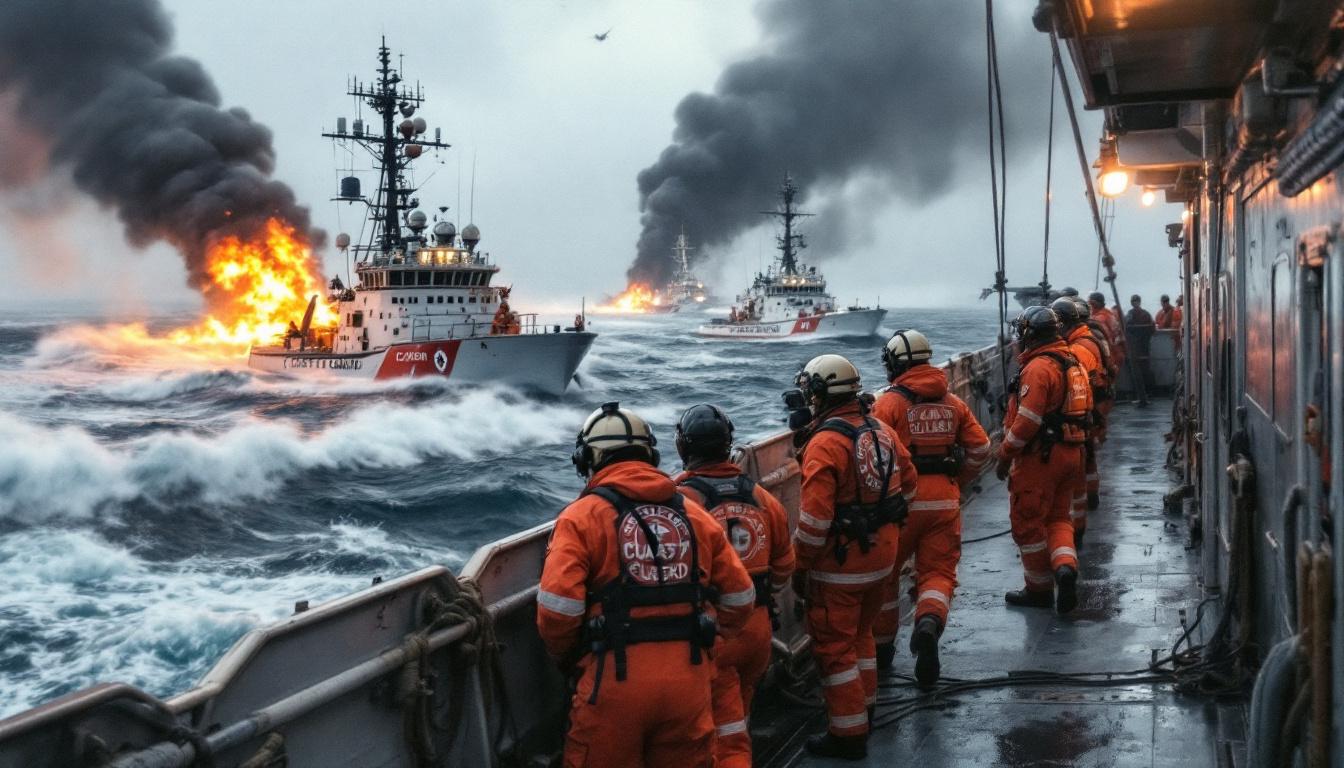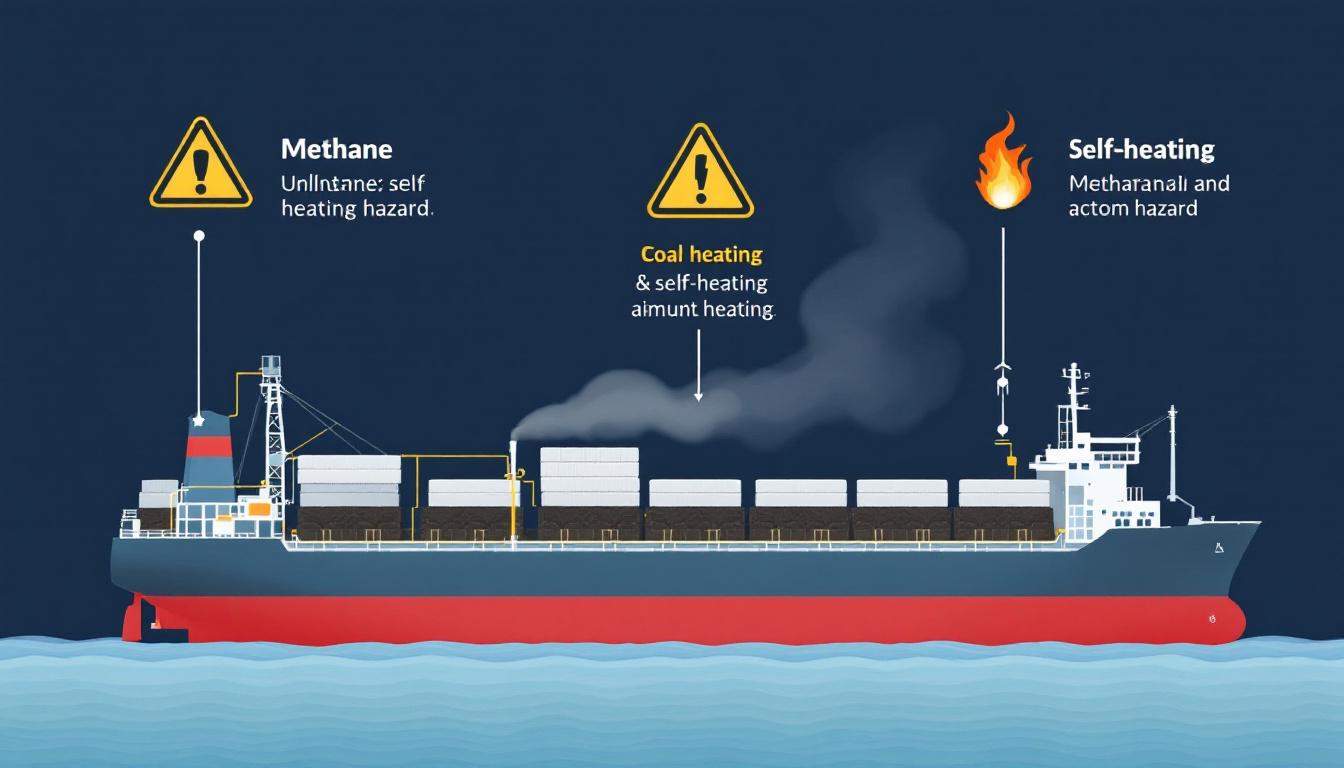On August 18, 2025, a massive explosion shook Baltimore Harbor. The incident happened around 6:30 p.m., involving a 751-foot bulk cargo ship named W-Sapphire. This event, coming just months after the tragic Key Bridge collapse, raised new concerns about maritime safety, emergency response, and the future of Baltimore’s busy port.
The Explosion: What We Know
Just as evening fell, a fireball erupted from the bow of the W-Sapphire. Thick black smoke rose above the ship, visible across much of Baltimore. The ship was carrying a large load of coal and was near the site of the Francis Scott Key Bridge collapse, a landmark that had already brought the city into the national spotlight.
Immediate Response

City officials, firefighters, the Coast Guard, and local port authorities hurried to the scene. Emergency response boats acted quickly to contain the blaze. Thanks to their rapid efforts, the fire was controlled, and the ship was kept afloat. Tugboats moved the damaged ship to a safe anchorage pending further investigation.
The Crew’s Safety
Aboard the W-Sapphire were 23 crew members and two pilots. Incredibly, and thankfully, none sustained injuries during the explosion or the subsequent fire. This successful rescue was a testament to both training and coordination among response teams.

After all crew were accounted for, the Coast Guard secured the site. The cause of the explosion remains under investigation, with officials noting that no hazardous materials beyond the coal cargo were reported.
Coal Cargo: Hazardous by Nature
Transporting coal isn’t as straightforward as it might sound. Coal is well-known in maritime and insurance circles as a risky material for several reasons:
- It can self-heat and catch fire if not properly ventilated.
- Coal emits methane—a flammable gas—while in storage and transit.
- Shifts in cargo or moisture content can cause coal to suddenly “liquefy,” making ships unstable.

To manage these risks, global standards require regular checks for gas levels and temperature. Any cargo hotter than 55°C (131°F) should be flagged as unsafe and not loaded at all. While major ports are strict about these rules, accidents can still happen. Recent warnings in the shipping industry highlight increasing incidents of high-methane coal cargoes—especially on the U.S. East Coast.
Site of the Key Bridge Disaster
Many in Baltimore remember the collapse of the Francis Scott Key Bridge in 2024. That event not only ended lives but also brought trade to a standstill for months. The W-Sapphire’s explosion happened right at that same spot, adding a layer of trauma for local responders and families.
With recovery from the bridge disaster still underway, the port operates under extra scrutiny and tighter controls. Even so, the U.S. Coast Guard and National Transportation Safety Board (NTSB) have yet to hold public hearings on this or the earlier bridge collision. This has frustrated many residents and industry leaders who want answers and improvements.
Port Safety: A System in Need of Upgrade
Baltimore’s harbor is among the few major U.S. ports without a modern Vessel Traffic Service (VTS) system. VTS functions much like air traffic control for ships, helping manage movements, avoid collisions, and speed up emergency response. Calls for such systems increased after the bridge disaster, but little progress has been made.
Had VTS been in place, some experts believe the W-Sapphire incident—and even the earlier bridge tragedy—might have been less severe. Baltimore’s port community is now pushing harder than ever for serious upgrades to keep workers and residents safe.
Aftermath and Next Steps
In the wake of the explosion, the W-Sapphire was moved to an anchorage off the shipping lanes. It remains under Coast Guard watch as investigators work to identify the precise cause of the blast. Early signs point to coal’s volatile nature as a likely culprit, but the shipping company and insurers are conducting thorough tests.
Environmental officials are monitoring air and water for any signs of pollution, but so far, no major spills or hazardous releases have been detected.
What This Means for Baltimore and Maritime Trade
Baltimore is one of America’s vital gateways for coal, cars, and raw materials. Repeated disasters threaten not just lives, but jobs, revenue, and the city’s reputation as a safe, reliable port.
This accident sharply highlights:
- The ongoing risks of bulk cargoes like coal
- The need for state-of-the-art monitoring and detection equipment
- Gaps in local emergency planning and vessel tracking
- The importance of transparency and accountability in public safety investigations
Conclusion
Baltimore’s August 2025 ship explosion is a wake-up call. Thanks to fast action, all crew survived and a major catastrophe was prevented. But with so much at stake—jobs, the environment, and public confidence—harbor authorities, shipping companies, and lawmakers must work together to upgrade safety systems and rewrite outdated protocols.
Only with real change will Baltimore’s port return to full strength, keeping workers safe and trade moving for years to come.
To contact us click Here .

